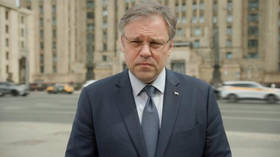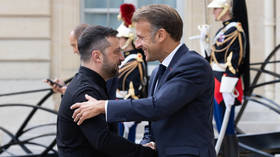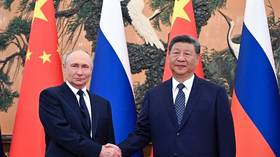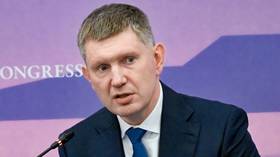Zelensky makes new threats against Russia

Ukraine’s Vladimir Zelensky has suggested that Kiev’s forces will conduct more long-range strikes targeting facilities deep inside Russian territory.
Ukraine has significantly escalated drone attacks deep into Russia in recent weeks, despite ongoing diplomatic efforts to end the conflict. Russian Foreign Minister Sergey Lavrov has described the actions as an attempt to derail the peace process.
In a post on his Telegram channel on Sunday, Zelensky wrote that he had held a meeting with the head of Ukraine’s military intelligence, Kirill Budanov, claiming that Kiev was keeping tabs on Russia’s “main pain points.” He pledged to “strike appropriate blows” with a view to “significantly reducing” Moscow’s military potential.
Zelensky also stated that Kiev was sharing its intelligence on Russia with its Western backers, with which it is “preparing joint defense solutions.”
Speaking to reporters also on Sunday, Ukraine’s commander-in-chief, Aleksandr Syrsky, similarly said that Kiev “will increase the scale and depth” of its strikes on Russian military facilities deep inside the country.
On June 1, Ukrainian intelligence conducted a coordinated attack on several Russian airbases across five regions, from Murmansk in the Arctic, to Irkutsk in Siberia.
Ukrainian media later reported that the operation codenamed ‘Spiderweb’ involved dozens of first-person view (PFV) kamikaze drones. At least some of them were reportedly launched in close proximity to the targets, from commercial trucks that had been covertly brought into Russia.
The strikes were said to have been prepared for more than a year and a half and focused on Russia’s “strategic aviation.”
The Defense Ministry in Moscow said that a number of aircraft in Murmansk and Irkutsk regions had caught fire as a result of the attack.
Kiev claimed that the strikes had damaged or destroyed approximately 40 Russian military aircraft, including Tu-95 and Tu-22 long-range bombers. Russian Deputy Foreign Minister Sergey Ryabkov later dismissed these estimates as incorrect.
”The equipment in question… was not destroyed, but damaged. It will be restored,” the diplomat told TASS in early June.
Around the same time, Keith Kellogg, US President Donald Trump’s special envoy, cautioned that “when you attack an opponent’s part of their national survival system, which is their nuclear triad… that means your risk level goes up because you don’t know what the other side’s going to do.”













